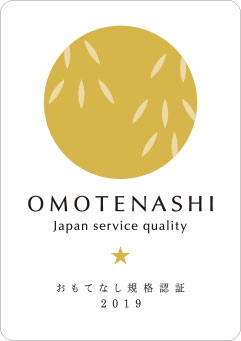Campus Create Co, Ltd will hold the Third Science Salon on October 28, 2022, titled “Next Generation Photonics and Multimedia Technologies”, to introduce the latest research in Quantum dot lasers, optical sensor LiDAR, optical devices, autostereoscopic displays and related technologies.
We are waiting for your participation.
【Date・Time】
Oct. 28, 2022(Fri.) 10:15~18:00(Japan Time)
Online seminar via ZOOM
Free to register
↓↓
https://forms.gle/VbfDRCU8vVnrGnu67
【Program】
Morning Session
10:15~10:25 Opening Remarks from Organizer Campus Create Co., Ltd
10:25~11:15 Elemental technologies for autostereoscopic displays in the next generation: time-division multiplexing and interleaved lenses
Assoc. Prof. Hideki Kakeya, University of Tsukuba
11:15~11:20 Break
11:20~12:10 FMCW LiDAR incorporating slow light grating beam scanners
Prof. Toshihiko Baba, Yokohama National University
Afternoon Session
14:25~14:30 Greeting from Organizer Campus Create Co., Ltd
14:30~15:20 Advances of VCSEL Photonics
Prof. Fumio Koyama, Tokyo Institute of Technology
15:20~16:10 Silicon Phonics Hybrid Wavelength Tunable Laser Diode
Prof. Tomohiro Kita, Waseda University
16:10~16:15 Break
16:15~17:05 Broadband photonic transceiver using heterogeneous material integration technology
Prof. Nobuhiko Nishiyama, Tokyo Institute of Technology
17:05~17:55 Advances in quantum dot lasers for silicon photonics
Prof. Yasuhiko Arakawa, The University of Tokyo
17:55~18:00 Closing Remark Campus Create Co., Ltd
【Speech Introduction 】
- Speech
Speech Title: Elemental technologies for autostereoscopic displays in the next generation: time-division multiplexing and interleaved lenses
Speaker: Assoc. Prof. Hideki Kakeya, University of Tsukuba
Abstract:
Most current autostereoscopic displays use spatial multiplexing such as lenticular lens based technology, which reduces spatial resolution of presented images, while time-division multiplexing makes it possible to present high-resolution stereoscopic images. This talk covers time-division parallax barrier and time-division directional backlight technologies as the examples of time-multiplexing. In addition, the detail of interleaved Fresnel lens used to realize directional backlight is explained and its application to 3D aerial image generation is described.
- Speech
Speech Title: FMCW LiDAR incorporating slow light grating beam scanners
Speaker: Prof. Toshihiko Baba, Yokohama National University
Abstract:
LiDAR, a 3D image sensor, which is attracting attention along with autonomous driving, uses a mechanical optical beam scanner. Recently, non-mechanical scanners such as OPA and FPA fabricated using Si photonics have been developed for more compact, fast LiDAR. On the other hand, we have developed a non-mechanical LiDAR incorporating a photonic crystal waveguide slow-light diffraction grating. In this presentation, we demonstrate 154×32=4928 point cloud images, real-time operation, and velocity imaging. 100 m class distance measurement is expected due to loss reduction and noise suppression.
- Speech
Speech Title: Advances of VCSEL Photonics
Speaker: Prof. Fumio Koyama, Tokyo Institute of Technology
Abstract:
The 45 years’ R&D opened up a new world of VCSEL photonics, including, sensors, optical interconnects in data center networks, LiDAR and high power sources. A lot of unique features have been proven. The market of VCSELs has been growing up rapidly and they are now key devices in data center networks. Also, 3D sensing has been attracting much attention for a wide range of applications such as face ID in mobile phones, LiDAR for automatic driving cars, distance sensor of robot, security camera, and motion sensors in virtual reality. In this talk, the advances on VCSEL photonics will be reviewed, in particular, high-speed VCSELs for optical interconnects and high-power VCSELs for 3D sensing.
- Speech
Speech Title: Silicon Phonics Hybrid Wavelength Tunable Laser Diode
Speaker: Prof. Tomohiro Kita, Waseda University
Abstract:
Silicon photonics hybrid wavelength tunable lasers diode can achieve high performance by effectively combining a compound semiconductor optical amplifier chip with high light emission efficiency and a silicon photonics chip with excellent controllability of light waves in a small photonic lightwave circuit. In this presentation, I will introduce a laser light source for application to large-capacity optical communication such as digital coherent optical communication and radio over fiber communication, and a LiDAR for application to autonomous driving.
- Speech
Speech Title: Broadband photonic transceiver using heterogeneous material integration technology
Speaker: Prof. Nobuhiko Nishiyama, Tokyo Institute of Technology
Abstract:
Toward the realization of future low-power, multi-terabit ultra-wideband optical transceivers, the current status and fabrication technology of photonic circuits based on heterogeneous material integration technology, which enables the use of different materials in suitable situations, will be described. The electronic circuits to operate such devices and applications will also be reviewed.
- Speech
Speech Title: Advances in quantum dot lasers for silicon photonics
Speaker: Prof. Yasuhiko Arakawa, The University of Tokyo
Abstract:
Quantum dot laser is the ultimate semiconductor laser having temperature-independent threshold current and zero linewidth enhancement factor. In this presentation, we discuss the progress of quantum dot lasers to date and show their future development as innovative light sources, focusing on silicon photonics. In addition, the application of quantum dots toward quantum technologies such as single-photon sources is also briefly discussed.


